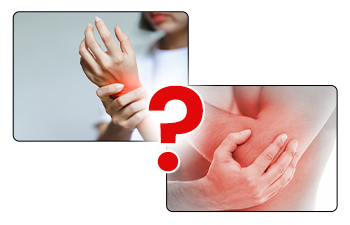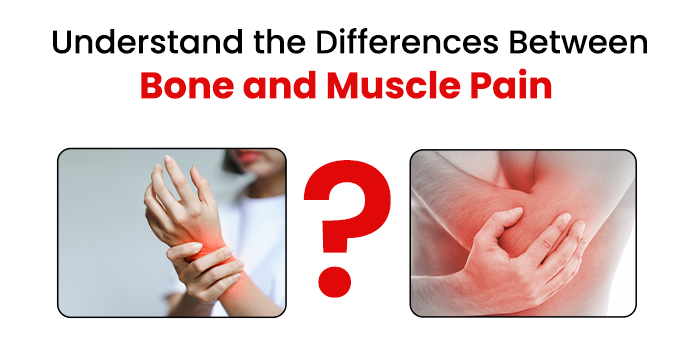
Understand the Differences Between Bone and Muscle Pain

Understand the Differences Between Bone and Muscle Pain
Pain, in its various forms, can be an unwelcome companion, impacting our daily lives and signaling potential health issues. Among the manifold types of pain, distinguishing between bone and muscle pain is crucial for accurate diagnosis and effective treatment. In this comprehensive guide, we’ll explore the characteristics, causes, and treatments for bone and muscle pain, shedding light on their nuances.
Understanding Bone Pain
Characteristics
Bone pain is often characterized by a deep, sharp, and intense sensation. It is more localized than muscle pain, focusing on a specific spot. The pain may persist for a longer duration, even at rest, making it less likely to ease within a day or two.
Common Causes
1. Injury: Sudden traumatic incidents like car accidents or falls can result in fractures or stress fractures, causing sharp bone pain.
2. Osteoporosis: A bone disease leading to decreased bone density, osteoporosis can cause painful fractures, especially in the hip, spine, and wrist.
3. Sickle Cell Disease: Insufficient healthy red blood cells can lead to bone damage and severe pain.
4. Infection: Osteomyelitis, an infection in the bone, can occur due to infections spreading from other parts of the body or injuries.
Treatment
Treatment for bone pain depends on its underlying cause. Fractures may require setting with a cast, while osteoporosis-related pain involves medications, lifestyle changes, and fall prevention. Cancer-related bone pain is complex, requiring customized approaches based on the cancer stage. Sickle cell disease-associated pain is managed with various medications.
Understanding Muscle Pain
Characteristics
Muscle pain, or myalgia, is more generalized, and often described as dull and aching. It tends to affect a broader area and is usually short-lived.
Common Causes
1. Autoimmune Conditions: Diseases like lupus and myositis cause the immune system to attack healthy muscles, resulting in inflammation and pain.
2. Muscle Strain: Overuse or repetitive activities can lead to muscle strain or injury, causing pain, swelling, and difficulty moving the affected muscle.
3. Neuromuscular Disorders: Conditions like myasthenia gravis and muscular dystrophy affect the peripheral nervous system, causing muscle weakness.
4. Infections: Bacterial and viral infections, such as influenza or Lyme disease, can cause muscle pain due to inflammation or immune responses.
5. Other Causes: Conditions like cancer, chronic fatigue syndrome, fibromyalgia, and hypothyroidism, as well as certain medications, can induce muscle pain.
Treatment
Treatment for muscle pain often involves rest, ice, and over-the-counter pain relievers. In autoimmune conditions, managing inflammation is crucial. A muscle strain may require medical intervention based on severity. Neuromuscular disorders demand a multidisciplinary approach, including medications and physical therapy. Infections causing muscle pain need specific treatments targeting the underlying infection.
Key Differences:
Locate-ability: Bone pain is easily pinpointed, while muscle pain is more generalized and challenging to identify.
Sensation: Bone pain is deep and sharp, while muscle pain is dull and aching.
Duration: Bone pain tends to last longer, even at rest, while muscle pain is usually short-lived.
Conclusion
In conclusion, understanding the differences between bone and muscle pain is pivotal for accurate diagnosis and targeted treatment. Whether it’s a fracture, autoimmune condition, or infection, seeking timely medical attention ensures effective management, reduces long-term effects, and facilitates a return to a better quality of life. If you experience significant bone or muscle pain, consult SAAOL Ortho CARE promptly for personalized and non-surgical orthopedic care and guidance.
